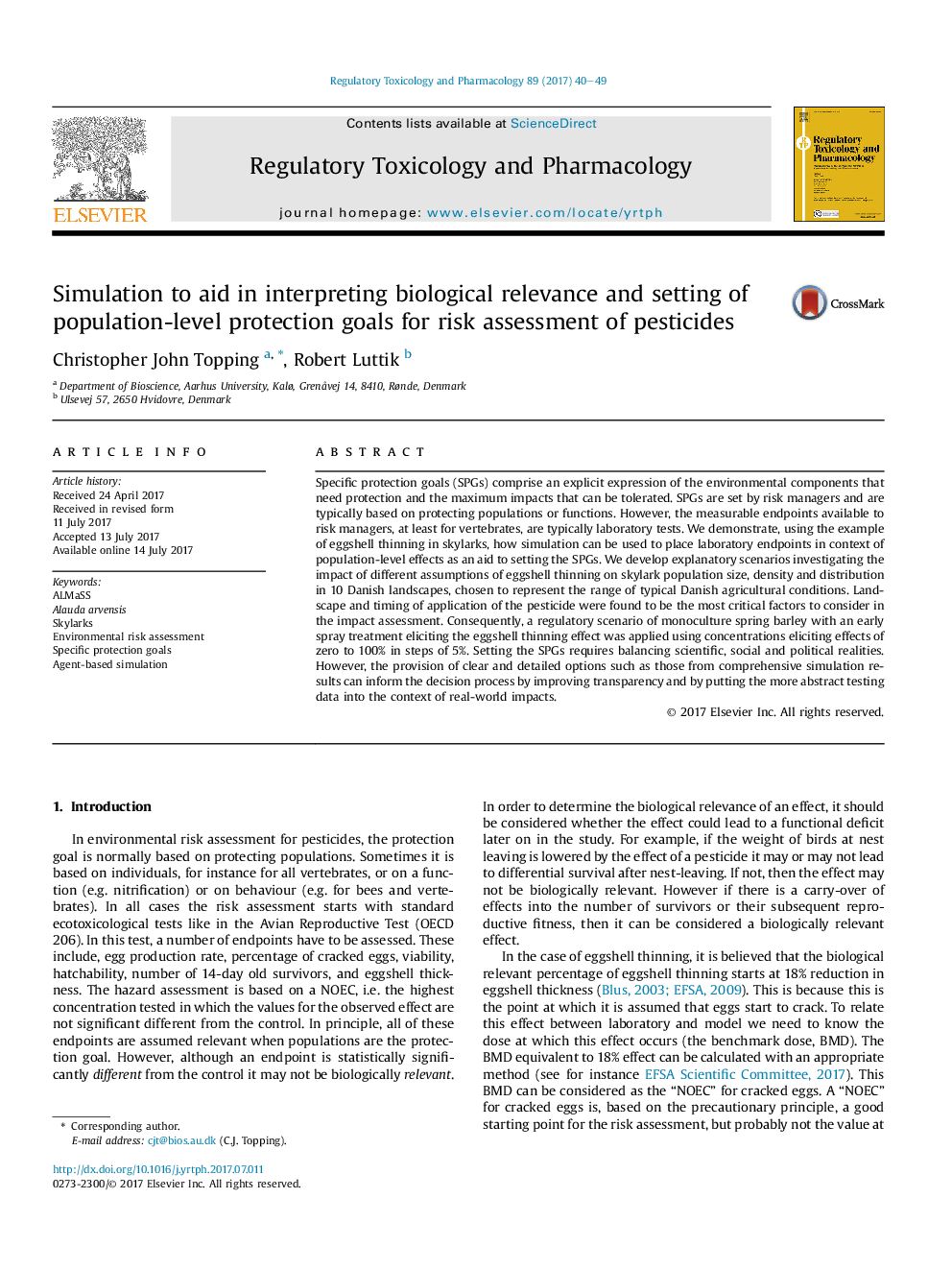| Article ID | Journal | Published Year | Pages | File Type |
|---|---|---|---|---|
| 5561187 | Regulatory Toxicology and Pharmacology | 2017 | 10 Pages |
Abstract
Specific protection goals (SPGs) comprise an explicit expression of the environmental components that need protection and the maximum impacts that can be tolerated. SPGs are set by risk managers and are typically based on protecting populations or functions. However, the measurable endpoints available to risk managers, at least for vertebrates, are typically laboratory tests. We demonstrate, using the example of eggshell thinning in skylarks, how simulation can be used to place laboratory endpoints in context of population-level effects as an aid to setting the SPGs. We develop explanatory scenarios investigating the impact of different assumptions of eggshell thinning on skylark population size, density and distribution in 10 Danish landscapes, chosen to represent the range of typical Danish agricultural conditions. Landscape and timing of application of the pesticide were found to be the most critical factors to consider in the impact assessment. Consequently, a regulatory scenario of monoculture spring barley with an early spray treatment eliciting the eggshell thinning effect was applied using concentrations eliciting effects of zero to 100% in steps of 5%. Setting the SPGs requires balancing scientific, social and political realities. However, the provision of clear and detailed options such as those from comprehensive simulation results can inform the decision process by improving transparency and by putting the more abstract testing data into the context of real-world impacts.
Related Topics
Life Sciences
Environmental Science
Health, Toxicology and Mutagenesis
Authors
Christopher John Topping, Robert Luttik,
